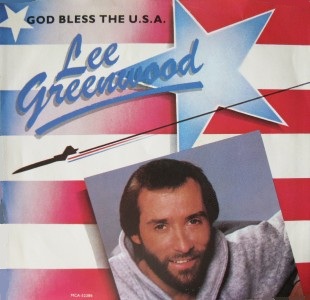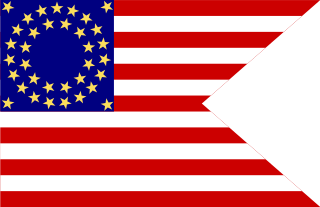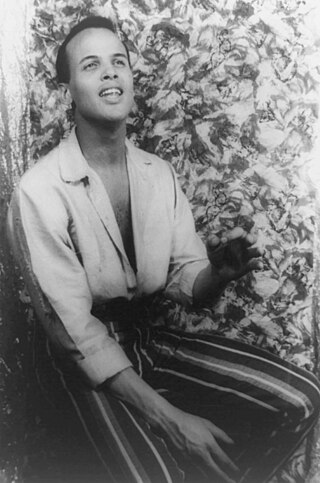Related Research Articles
An earworm or brainworm, also known as sticky music or stuck song syndrome, is a catchy or memorable piece of music or saying that continuously occupies a person's mind even after it is no longer being played or spoken about. Involuntary Musical Imagery (INMI) is most common after earworms, but INMI as a label is not solely restricted to earworms; musical hallucinations also fall into this category, although they are not the same thing. Earworms are considered to be a common type of involuntary cognition. Some of the phrases often used to describe earworms include "musical imagery repetition" and "involuntary musical imagery".

"Anchors Aweigh" is the fight song of the United States Naval Academy and unofficial march song of the United States Navy. It was composed in 1906 by Charles A. Zimmermann with lyrics by Alfred Hart Miles. When he composed "Anchors Aweigh", Zimmermann was a lieutenant and had been bandmaster of the United States Naval Academy Band since 1887. Miles was midshipman first class at the academy, in the class of 1907, and had asked Zimmermann to assist him in composing a song for that class, to be used as a football march. Another academy midshipman, Royal Lovell, later wrote what would be adopted into the song as its third verse.

"God Bless the U.S.A." is an American patriotic song written and recorded by American country music artist Lee Greenwood, and is considered to be his signature song. The first album it appears on is his 1984 album You've Got a Good Love Comin'. It reached No. 7 on the Billboard magazine Hot Country Singles chart when originally released in the spring of 1984. That summer, the song was included in a film about President Ronald Reagan, the Republican presidential nominee, that was shown at the 1984 Republican National Convention. "God Bless the U.S.A." gained prominence during the 1988 United States presidential election campaign, when Greenwood performed the song at the 1988 Republican National Convention and at rallies for the Republican nominee, George H.W. Bush. The song was also featured in television advertisements for Bush. The song became popular again during the Gulf War in 1990 and 1991. As a result of its newfound popularity, Greenwood re-recorded the track for his 1992 album American Patriot.
The Air and Space Training Ribbon (ASTR) is the lowest military award of the United States Air Force and United States Space Force, ranking only above foreign military awards.
A "V" device is a metal 1⁄4-inch (6.4 mm) capital letter "V" with serifs which, when worn on certain decorations awarded by the United States Armed Forces, distinguishes an award for heroism or valor in combat instead of for meritorious service or achievement.
An Arabic numeral device or numeral device sometimes called an "award numeral", is a United States Armed Forces service device that may be authorized for wear on specific service ribbons and suspension ribbons of medals. Arabic numeral devices are bronze or gold in color and are 3⁄16 inch in height.
"Misirlou" is a folk song from the Eastern Mediterranean region. The original author of the song is not known, but Arabic, Greek, and Jewish musicians were playing it by the 1920s. The earliest known recording of the song is a 1927 Greek rebetiko/tsifteteli composition. There are also Arabic belly dancing, Albanian, Armenian, Serbian, Persian, Indian and Turkish versions of the song. This song was popular from the 1920s onwards in the Arab American, Armenian American and Greek American communities who settled in the United States.

The Recruiter Badge is a decoration of the United States uniformed services that is awarded to personnel who have performed recruitment duties as service recruiters. The Recruiter Badge is issued by every branch of the U.S. uniform services except for the Marine Corps and the NOAA Commissioned Corps. With the exception of the U.S. Army, a Recruiting Service Ribbon is also awarded to those personnel who have completed successful tours as recruiters.

"The Great Rock Island Route", popularized as "Wabash Cannonball" and various other titles, is a 19th-century American folk song that describes the scenic beauty and predicaments of a fictional train, the Wabash Cannonball Express, as it traveled on the Great Rock Island Railroad. The song has become a country music staple and common marching band repertoire. The only train to actually bear the name was created in response to the song's popularity, with the Wabash Railroad renaming its daytime express service between Detroit and St. Louis as the Wabash Cannon Ball from 1949 until discontinuation during the formation of Amtrak in 1971.

"Columbia, the Gem of the Ocean" is an American patriotic song which was popular in the U.S. during the 19th and early 20th centuries. Composed c. 1843, it was long used as an unofficial national anthem of the United States, in competition with other songs. Under the title "Three Cheers for the Red, White, and Blue," the song is mentioned in Chapter IX of MacKinlay Kantor's Pulitzer Prize-winning novel Andersonville (1955). It was also featured in the 1957 musical The Music Man. In 1969, "Columbia, the Gem of the Ocean" was the music performed by a U.S. Navy Band embarked aboard USS Hornet as one of the ship's helicopters recovered the Apollo 11 astronauts from their capsule named Columbia after a splashdown in the Pacific Ocean.

In the United States Army, Navy, Air Force, Marine Corps and Coast Guard, a guidon is a military standard or flag that company/battery/troop or platoon-sized detachments carry to signify their unit designation and branch/corps affiliation or the title of the individual who carries it. A basic guidon can be rectangular, but sometimes has a triangular portion removed from the fly.

United States military bands include musical ensembles maintained by the United States Army, United States Marine Corps, United States Navy, United States Air Force, and United States Coast Guard. More broadly, they can also include musical ensembles of other federal and state uniformed services, including the Public Health Service and NOAA Corps, the state defense forces, and the senior military colleges.

"Oh! Susanna" is a minstrel song by Stephen Foster (1826–1864), first published in 1848. It is among the most popular American songs ever written. Members of the Western Writers of America chose it as one of the Top 100 Western songs of all time.
"The Army Goes Rolling Along" is the official song of the United States Army and is typically called "The Army Song". It is adapted from an earlier work titled the "U.S. Field Artillery March".

"Day-O " is a traditional Jamaican folk song. The song has mento influences, but it is commonly classified as an example of the better known calypso music.

"The U.S. Air Force" is the official song of the United States Air Force, adopted in the late 1940s, and is often referred to as "Wild Blue Yonder".

The uniforms of the United States Air Force are the standardized military uniforms worn by airmen of the United States Air Force to distinguish themselves from the other services.
The United States Coast Guard Band is the premier band representing the United States Coast Guard and the Department of Homeland Security. Established in 1925, the Coast Guard Band is stationed at the U.S. Coast Guard Academy in New London, Connecticut. The Band frequently appears in Washington, D.C., at presidential and cabinet-level functions on formal and informal occasions. Once a year, it undertakes national and international tours to promote the Coast Guard.
The "Marines' Hymn" is the official hymn of the United States Marine Corps, introduced by the first director of the USMC Band, Francesco Maria Scala. Its music originates from an 1867 work by Jacques Offenbach with the lyrics added by an anonymous author at an unknown time in the following years. Authorized by the Commandant of the Marine Corps in 1929, it is the oldest official song in the United States Armed Forces. The "Marines' Hymn" is typically sung at the position of attention as a gesture of respect. However, the third verse is also used as a toast during formal events, such as the birthday ball and other ceremonies.
"Semper Supra" is the official march of the United States Space Force, composed in 2022 by James Teachenor and Sean Nelson.
References
- 1 2 "U.S. Air Force Blue". Air Force Bands. U.S. Air Force . Retrieved July 27, 2019.
- ↑ McReynolds, Bill (February 8, 1957). "Entertainment Capers". Amarillo Globe Times. Retrieved July 27, 2019– via newspapers.com.(subscription required)
- 1 2 "New Air Force Song Aired this Month". Carrier's Courier. U.S. Air Force. February 8, 1957. Retrieved July 27, 2019– via newspapers.com.(subscription required)
- 1 2 3 ""The U.S. Air Force Blue" song". 20th Tactical Fighter Wing. U.S. Air Force . Retrieved July 27, 2019.
- ↑ "AIR FORCE MANUAL 35-106 25 JULY 2018" (PDF). af.mil. United States Air Force. p. 155. Retrieved July 27, 2019.
- ↑ Powers, Richard Grid (Summer 1974). "The Cold War in the Rockies: American Ideology and the Air Force Academy Design". Art Journal. 33 (4): 304–313. doi:10.1080/00043249.1974.10793234. JSTOR 775968.
- ↑ Ewing, Philip (November 13, 2009). "USNA Subbed Mids". Navy Times.